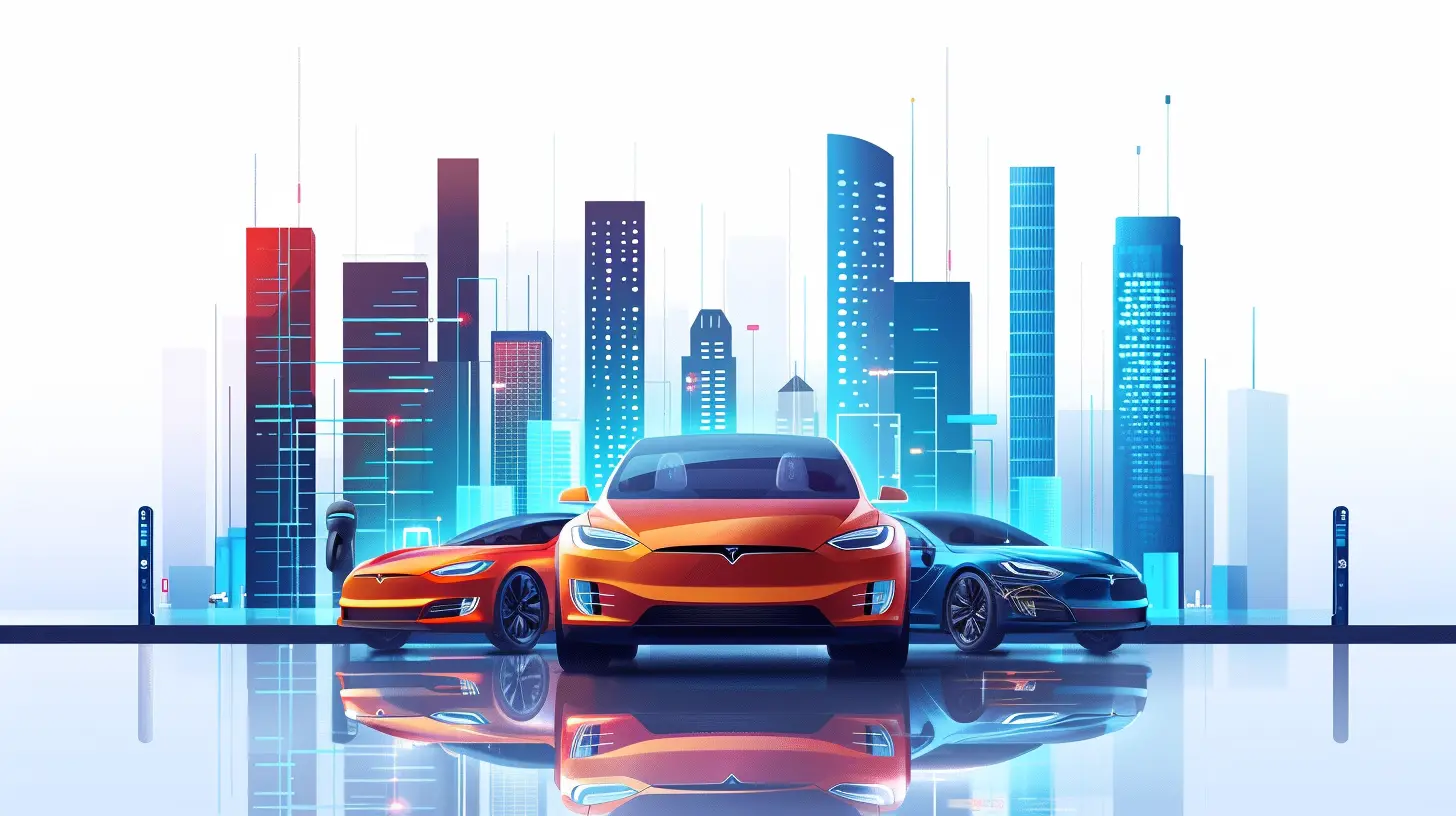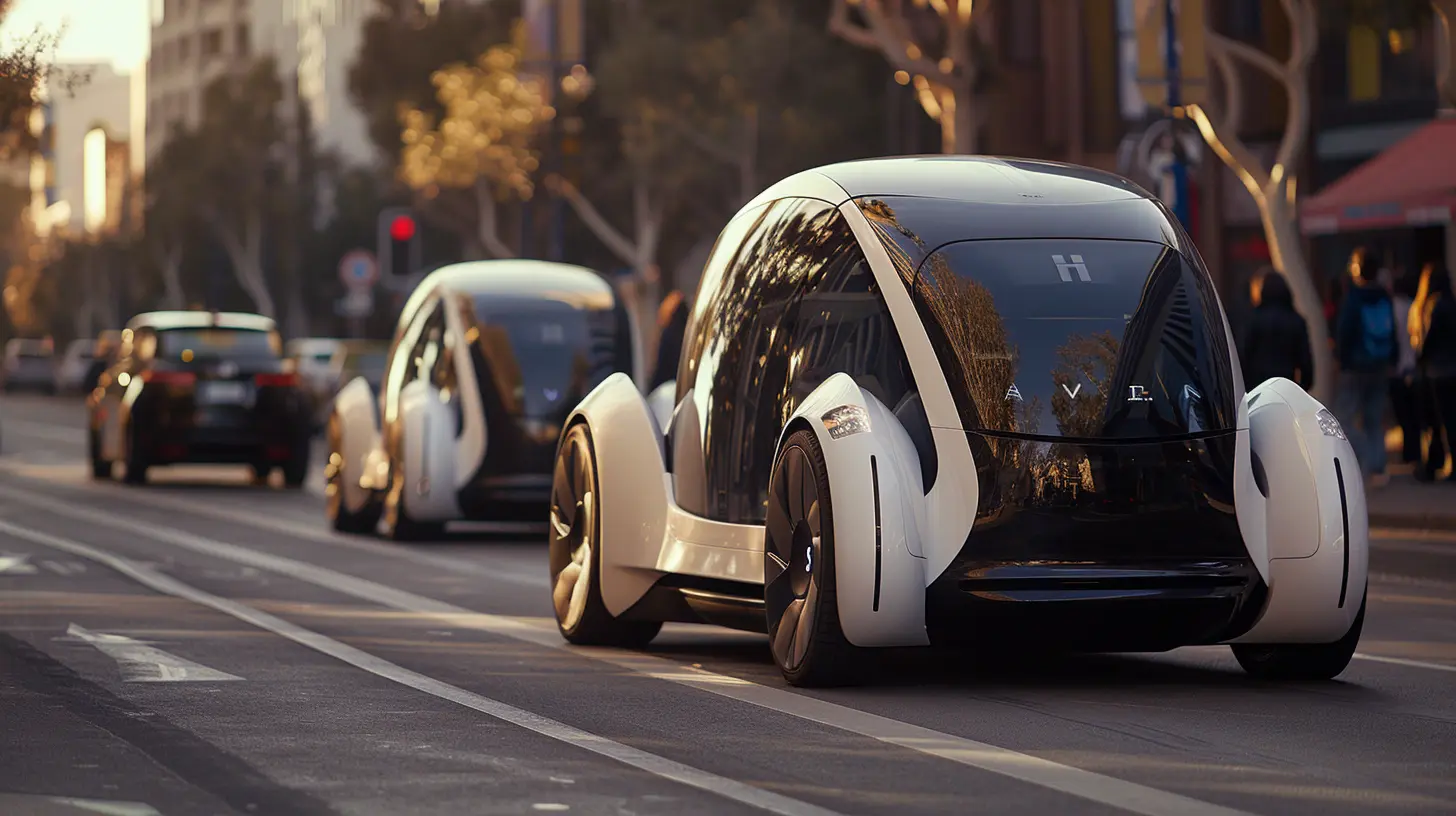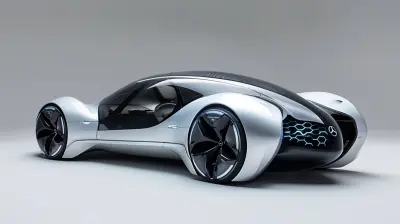The Benefits of Electric Vehicles for Ride-Sharing Services
19 November 2024
Electric vehicles (EVs) have been making waves in the automotive industry for a while now. But one area where they’re really charging ahead (pun intended) is the ride-sharing industry. If you’ve used Uber, Lyft, or any other ride-hailing service, you might have noticed more and more drivers rolling up in sleek, silent electric cars. But why is that happening? What’s the big deal about electric vehicles when it comes to ride-sharing services?
Let’s plug in and explore the major benefits of electric vehicles for ride-sharing services and why they might just be the future of urban transportation.

Lower Operational Costs for Drivers
One of the primary reasons EVs are becoming more popular in the ride-sharing industry is because they can drastically cut down on costs for drivers. We all know that gas prices can fluctuate wildly, and, more often than not, they’re on the higher side. EV drivers, however, can say goodbye to gas stations—electricity is far cheaper than gasoline.Fuel Savings
Imagine not having to stop at a gas station every couple of days. That’s money back in your pocket right there! On average, an electric vehicle costs about half as much to "recharge" as it does to fill up a traditional gasoline-powered car. Depending on the region, drivers can save thousands of dollars per year just in fuel costs. For ride-sharing drivers who are on the road all day, this is a game-changer.Lower Maintenance Costs
It's not just fuel where drivers save. Electric vehicles have fewer moving parts than traditional cars. No engine, no oil changes, fewer fluids to top up, and fewer parts that can break. This translates to lower maintenance costs. Brake pads, for instance, wear out less quickly because EVs use regenerative braking systems that help slow the vehicle down while also charging the battery.In short, EVs are less likely to leave drivers stranded with unexpected repair bills. For ride-sharing drivers who rely on their vehicles for income, this reliability is priceless.

Environmental Benefits
We can’t talk about electric vehicles without mentioning the environment. Ride-sharing services like Uber and Lyft have been criticized for contributing to urban pollution and traffic congestion. With EVs, these companies have a real opportunity to reduce their environmental impact.Reduced Greenhouse Gas Emissions
Let’s face it: traditional gasoline-powered cars are major polluters. Every time you start the engine, you're contributing to air pollution and the worsening climate crisis. Electric vehicles, on the other hand, emit zero tailpipe emissions. That means no carbon dioxide, no nitrogen oxides, and no particulate matter that contribute to smog and respiratory illnesses.For ride-sharing, using electric vehicles could lead to significant reductions in greenhouse gas emissions, especially in densely populated urban areas where ride-hailing services are most popular. It’s a win-win: drivers save money, and the planet gets a break.
Cleaner Air in Cities
Electric vehicles don’t just help reduce global carbon emissions—they also improve the air quality in cities. If you live in a big city, you’ve probably experienced the haze of pollution that hangs in the air, especially during rush hour. By transitioning to electric vehicles, ride-sharing services can cut down on the smog and improve air quality for everyone. Cleaner air means fewer health problems like asthma and other respiratory issues.Think of it this way: every time you take a ride in an electric vehicle, you’re not just getting from point A to point B—you’re also contributing to a healthier city.

Positive Brand Image for Ride-Sharing Companies
Now, let’s talk about the companies themselves. Uber, Lyft, and other ride-sharing platforms have a vested interest in going green. Why? Well, for one, customers are becoming more environmentally conscious. People want to know that the services they’re using are making an effort to reduce their carbon footprint. By encouraging or even requiring drivers to switch to EVs, ride-sharing companies can improve their brand image and make themselves more appealing to eco-conscious riders.Marketing and Public Relations Boost
Imagine Uber or Lyft running ads that showcase their commitment to reducing emissions by transitioning to electric vehicles. It's a great marketing tool. People love to support brands that care about the environment. Plus, cities are increasingly setting stricter regulations on emissions, and companies that get ahead of the curve with EVs will be in a better position to comply with these regulations.By investing in electric vehicles, ride-sharing services not only reduce their environmental impact but also build a positive image that can attract both customers and investors. It’s all about staying ahead in a competitive market, and going green is one way to do just that.

Reduced Noise Pollution
We’ve all experienced the constant hum of traffic in urban areas. It’s not just gas emissions that pollute cities—noise pollution is a big problem, too. Traditional gas-powered cars are noisy, especially when they’re idling in traffic. Electric vehicles, on the other hand, are almost completely silent.Quieter Streets
Imagine a future where ride-sharing services use mostly electric vehicles. Streets would be significantly quieter. No more roaring engines or loud exhausts. This would greatly improve the quality of life in cities, making them more pleasant places to live and work. For the millions of people who live in busy urban areas, that reduction in noise would be a welcome relief.Reduced Driver Fatigue
And let’s not forget the drivers. Driving in heavy traffic can be stressful enough without the added noise of a roaring engine. A quieter cabin means a more peaceful driving experience, which can reduce driver fatigue and make those long shifts a little easier to handle.Incentives and Perks for Drivers
Governments are increasingly offering incentives to encourage the adoption of electric vehicles. These incentives can be a huge draw for ride-sharing drivers looking to make the switch to an EV.Tax Credits and Rebates
In many countries and regions, electric vehicle buyers are eligible for tax credits or rebates. These financial incentives can make the initial cost of purchasing an EV much more manageable. For ride-sharing drivers who spend a lot of time on the road, these savings can make a big difference.Access to HOV Lanes
In some regions, electric vehicles are allowed to use High Occupancy Vehicle (HOV) lanes even if they’re driving solo. This can be a huge perk for ride-sharing drivers who need to navigate busy urban areas quickly. Less time in traffic means more rides and more income.Free or Discounted Charging
Some cities and companies offer free or discounted charging for electric vehicles. For ride-sharing drivers who spend a lot of time charging their cars, this can be a significant benefit. Imagine being able to "fuel up" for free while you grab a coffee or take a quick break between rides!
The Future of Ride-Sharing: Autonomous Electric Vehicles?
Looking ahead, the combination of electric vehicles and autonomous driving technology could revolutionize the ride-sharing industry even further. Companies like Tesla, Waymo, and Uber are already investing heavily in self-driving technology, and electric vehicles are at the heart of this innovation.Autonomous Fleets
Imagine fleets of fully autonomous electric vehicles roaming the streets, picking up passengers without any human intervention. These vehicles could operate 24/7, reducing labor costs and maximizing efficiency. With fewer moving parts and lower maintenance costs, electric vehicles are the perfect candidates for this future vision of ride-sharing services.Reduced Dependency on Human Drivers
This future could also lessen the dependency on human drivers, which is a controversial topic, but it’s worth considering. Autonomous electric ride-sharing fleets could eventually operate more cheaply and efficiently than human-driven gasoline-powered cars. It’s a glimpse into the future, and EVs are leading the way.Conclusion: Electric Vehicles Are the Future of Ride-Sharing
Whether you’re a driver, a passenger, or just someone who’s interested in the future of transportation, it’s clear that electric vehicles are a huge step forward for the ride-sharing industry. They offer lower operational costs for drivers, environmental benefits, and even the potential for cleaner, quieter cities. Ride-sharing companies can improve their brand image while staying ahead of regulatory requirements, and drivers can take advantage of incentives and perks that make switching to an EV easier than ever.The shift to electric is happening, and ride-sharing services are at the forefront of this change. So the next time you hail a ride, don’t be surprised if an electric vehicle pulls up. It’s not just the future—it’s happening right now.
all images in this post were generated using AI tools
Category:
Electric VehiclesAuthor:

Vincent Hubbard
Discussion
rate this article
20 comments
Zephyrae Benson
This article highlights crucial benefits of electric vehicles for ride-sharing, such as reduced emissions and lower operational costs. It’s a step towards sustainable transportation, but addressing infrastructure challenges remains vital for widespread adoption.
March 31, 2025 at 3:50 AM

Vincent Hubbard
Thank you for your insightful comment! I completely agree that while electric vehicles offer significant benefits for ride-sharing, overcoming infrastructure challenges is essential for their broader implementation.
Kassandra Vasquez
Great insights! EVs are the future of ride-sharing!
February 1, 2025 at 8:16 PM

Vincent Hubbard
Thank you! I'm glad you found the insights valuable. EVs indeed hold great promise for ride-sharing!
Octavia Larsen
Great insights on sustainable transport!
January 26, 2025 at 12:11 PM

Vincent Hubbard
Thank you! I'm glad you found the insights valuable.
Bethany Willis
Efficiency meets sustainability synergy.
January 18, 2025 at 8:05 PM

Vincent Hubbard
Thank you! Electric vehicles truly exemplify how sustainability and efficiency can work together to revolutionize ride-sharing services.
Zayne McKnight
Great insights! Electric vehicles are a win-win for ride-sharing—better for the planet and our wallets!
January 13, 2025 at 9:29 PM

Vincent Hubbard
Thank you! I’m glad you found the insights valuable. Electric vehicles truly offer significant benefits for both the environment and ride-sharing economics!
Calyx Burton
Electric vehicles enhance efficiency and sustainability in ride-sharing.
January 8, 2025 at 4:58 AM

Vincent Hubbard
Absolutely! Electric vehicles significantly reduce emissions and operating costs, making ride-sharing more sustainable and efficient for both providers and users.
Josephine Love
Exciting times ahead! Electric vehicles transform ride-sharing for a greener future!
January 3, 2025 at 5:51 AM

Vincent Hubbard
Thank you! We're thrilled about the potential of electric vehicles to revolutionize ride-sharing and promote sustainability.
Drew Kelly
Great insights! EVs truly enhance ride-sharing sustainability!
December 30, 2024 at 7:34 PM

Vincent Hubbard
Thank you! I'm glad you found the insights valuable. EVs are indeed a game-changer for sustainable ride-sharing!
Kevin McCaw
Electric vehicles enhance ride-sharing by reducing operational costs, minimizing environmental impact, and attracting eco-conscious consumers. Their quieter operation also improves urban experiences, paving the way for a sustainable future in urban mobility.
December 27, 2024 at 12:22 PM

Vincent Hubbard
Thank you for highlighting these important benefits! Electric vehicles indeed play a crucial role in promoting sustainable and efficient ride-sharing services.
Lira Wagner
Exploring sustainability, but can infrastructure keep pace?
December 23, 2024 at 7:41 PM

Vincent Hubbard
Yes, infrastructure must evolve alongside electric vehicle adoption to support sustainable growth in ride-sharing services.
Adeline McNeil
Electric vehicles in ride-sharing not only reduce emissions but also promote sustainability and cost-efficiency. Embracing this shift can lead to cleaner cities and a more sustainable future for transportation.
December 14, 2024 at 9:21 PM

Vincent Hubbard
Thank you for your insight! You're absolutely right—electric vehicles in ride-sharing indeed enhance sustainability, reduce emissions, and offer cost benefits, paving the way for greener urban transport.
Claire Hamilton
Electric vehicles reduce emissions, lower costs, and enhance ride-sharing efficiency.
December 11, 2024 at 12:12 PM

Vincent Hubbard
Thank you! Indeed, electric vehicles offer significant advantages for ride-sharing by minimizing emissions, reducing operational costs, and improving overall efficiency.
Casey Carr
Electric vehicles in ride-sharing offer significant benefits, including reduced operational costs, lower emissions, and enhanced customer appeal. As cities prioritize sustainability, EVs not only align with environmental goals but also enhance the competitive edge of ride-sharing platforms.
November 30, 2024 at 7:42 PM

Vincent Hubbard
Thank you for your insightful comment! I completely agree—electric vehicles in ride-sharing not only drive down costs and emissions but also promote sustainability, making them a win-win for both providers and customers.
Keira Warren
Electric vehicles revolutionize ride-sharing: efficiency, savings, and a sustainable future!
November 27, 2024 at 8:48 PM

Vincent Hubbard
Absolutely! Electric vehicles not only enhance efficiency and reduce costs for ride-sharing but also play a crucial role in promoting environmental sustainability.
Khloe Ellison
Amidst the hum of electric engines, a silent revolution brews. Could ride-sharing's shift to electric vehicles unveil hidden efficiencies and untold secrets lurking within our urban landscapes? The future beckons—listen closely.
November 26, 2024 at 8:58 PM

Vincent Hubbard
Absolutely! The transition to electric vehicles in ride-sharing not only enhances sustainability but also uncovers efficiencies in urban mobility, paving the way for smarter, cleaner cities. The future is indeed promising!
Ziva Peterson
Less gas, more sass—EVs are winning rides!
November 25, 2024 at 10:05 PM

Vincent Hubbard
Absolutely! EVs bring not only sustainability but also a fun, stylish edge to ridesharing.
Penelope Klein
EVs enhance sustainability but challenge charging infrastructure.
November 24, 2024 at 1:20 PM

Vincent Hubbard
Thank you for your comment! While EVs indeed promote sustainability, addressing charging infrastructure is essential for maximizing their potential in ride-sharing services.
Vance Sanders
Great article! I appreciate the insights on how electric vehicles enhance sustainability and efficiency in ride-sharing. It's essential to recognize the positive impact on both the environment and the overall passenger experience. Thank you for sharing!
November 21, 2024 at 7:35 PM

Vincent Hubbard
Thank you for your kind words! I'm glad you found the insights valuable. Sustainability in ride-sharing is indeed crucial for a better future.
Layla McLaury
Electric vehicles enhance ride-sharing services by reducing operating costs, lowering emissions, and improving air quality. Their quiet operation and innovative technology also offer passengers a more comfortable and enjoyable ride experience.
November 20, 2024 at 9:54 PM

Vincent Hubbard
Thank you for your insightful comment! Electric vehicles truly revolutionize ride-sharing by combining cost efficiency, sustainability, and enhanced passenger comfort.
Zevon Duffy
Electric vehicles enhance ride-sharing efficiency, reduce emissions, and lower operational costs significantly.
November 19, 2024 at 5:15 AM

Vincent Hubbard
Thank you for your comment! Indeed, electric vehicles are game changers for ride-sharing, contributing to sustainability and cost savings.
MORE POSTS

How Cloud Computing is Revolutionizing Enterprise IT Infrastructure

The Rise of IoT in Sports and Athlete Performance Monitoring

How to Choose the Perfect Streaming Device for Your Home Setup

Electric Bicycles: The Future of Sustainable Transportation

How Battery Efficiency Impacts the Future of Autonomous Vehicles

The Role of Drones in Wildlife Conservation

How to Optimize Your Streaming Device for Faster Streaming

How Biohacking Is Shaping the Future of Wearable Devices

The Role of Antivirus Software in Protecting Your Devices

Gadgets That Help You Sleep Better

How 3D Printing Gadgets Are Changing DIY Projects

How Cloud-Based ERP is Transforming Business Operations